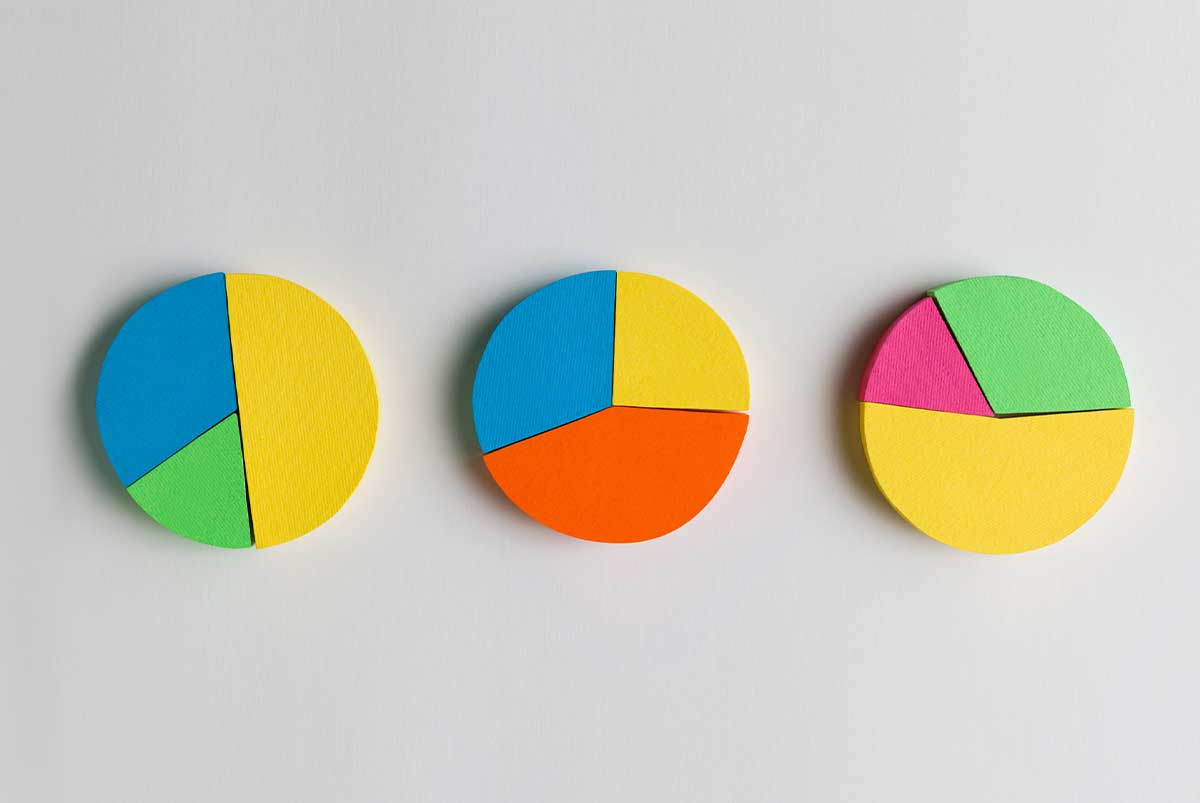Ready To Buy a Home?
Get Approved to Buy a Home
Rocket Mortgage® lets you get to house hunting sooner.
Benjamin Franklin and Albert Einstein have both been quoted as fans of compound interest. While compounding interest may not be E=MC2 or the Declaration of Independence, it does speak to an understanding of how math can affect our view of the universe.
This is especially true when you’re dealing with two commonly seen but often misunderstood abbreviations, Annual Percentage Rate (APR) and Annual Percentage Yield (APY). While APR and APY seem the same, banks, credit unions, and other lenders use them in different ways when they lend you money or ask you to deposit money with them.
Compound Interest: What Is It And How Does It Affect APR and APY?
Compound interest refers to interest that’s earned on previously earned interest, which is then added to the original balance of the loan. In its simplest form it might work like this:
Put $100 into an interest bearing account with a 4% APR. At the end of your first year, you will have earned 4% interest on $100 ($4) bringing the total to $104. The second year you will earn 4% on the $104 ($4.16) for a total of $108.16. So each year you keep the money in the account you earn a little extra. With enough money and enough time, it can add up.
Most loans and investments use some form of compound interest.
When you’re charged money to borrow, that amount is usually measured using an APR. While your APR doesn’t take compounding interest into account when promoting your rate, it does come into play if you carry a balance over time.
When a lender tells you how much return you can expect to receive on an investment, it’s measured using an APY. Lenders will usually promote APY using compound interest, which can boost potential earnings and the potential APR.
What is APR (Annual Percentage Rate)?
APR, sometimes referred to as the Effective Annual Rate (EAR) or Effective Interest Rate (EIR), is a measure of the total cost to borrow money from a lender. APR includes both the interest on money you’re borrowing and the lender fees, closing costs and insurance that you’re likely to pay.
APR usually applies to several credit scenarios, including these:
- Credit card
- Home mortgage loan
- Personal loan
- Student loan
- Personal or business line of credit
- Home equity loan or home equity line of credit (HELOC)
Here’s why APR can add up so quickly. It’s because APR is determined by multiplying the periodic interest rate by the number of periods in which the periodic rate is applied.
While APR measures interest within a one-year period, the number of periods within that year can range from monthly (12) to quarterly (4) to semi-annually (2) to annually (1).
APR = Periodic Rate x Number of Periods in a Year
So for instance, if you have a loan that charges 1% interest each month your APR would be 12% for the year.
That doesn’t seem too bad, but remember that you’re charged interest if you don’t pay off your balance in full each month. Credit card companies actually hope that you won’t do that, so as your balance goes up, you’re paying interest every month based on your current balance.
What is APY (Annual Percentage Yield)?
So if the APR is the cost to borrow, APY is the return you can make when you put money into an interest-bearing deposit account such as a:
- Savings account
- Money market account or other high yield savings account
- Certificate of deposit (CD) or other investment account
Here’s the formula for calculating APY.
APY = (1 + r/n)n – 1.
Where r equals the interest rate and n equals the number of periods.
The math gets a little complicated, but essentially if you multiply 12% by itself once you get a 12% return in the first year (e.g., compounded once each year – one period.)
If you multiply 1% times itself 12 times you get a 12.68% return in the first year (e.g., compounded once each month – 12 periods). It may not seem like much, but that .68% can add up when you’re talking about thousands of dollars over 10 – 30 years.
APR vs. APY: Which Is Better?
With APR and APY, it’s not about which is better – it’s how they are applied. They are different ways to measure how much money you may pay to borrow (APR) or how much you can earn when you invest (APY).
That said, it’s a good idea to understand how lenders use APR and APY so you can understand how to pay less to borrow or get more back when you invest.
How lenders use APR
If you’re looking for a loan or a credit card, a lower APR usually means it will cost you less to borrow, both in interest and fees.
Lenders will advertise a low APR as an appealing way to save you money on a short-term loan. After all, an APR of 3% – 6% on a mortgage, 4% APR on a student loan or even 14% APR on a credit card doesn’t seem that bad. But watch what happens when compound interest is applied.
- Credit card interest: If you have a credit card with a $2,000 balance and a 14% APR and make a payment of $80 each month to cover the balance, it would take you 2 1/2 years to pay off the balance and cost you $378.39 or 16% of the original loan balance. That’s assuming you don’t make any additional purchases with the card and that no additional fees are added to your balance.
That might not seem like much on this small credit card balance, so short term, the lenders are right. But a low ARP on a larger balance over a longer period of time can be more daunting, as in mortgages and student loans.
- Mortgage interest: A $100,000 fixed-rate 30-year mortgage with a 3% APR would cost $51,777 over the life of the loan or 51% of the original loan’s value.
- Student loan interest: A $10,000 student loan with a 10-year term and 4% APR would cost $2,149.42 in interest over the life of the loan or 21% of the original loan’s value.
So, given that information, you can see how ARP works over time. But it’s also good to realize that if a loan has a higher ARP, it can be less costly if it’s short term, or if you pay it off quickly, because it has less time to accrue interest and fees.
Regardless of the ARP, paying off any debt in a shorter period of time, rather than longer, is one way to reduce your cost of borrowing money.
How lenders use APY
Lenders talk about APY the opposite way. A bank or credit union will advertise their APY to look as robust as possible by maximizing the potential compound interest.
So when comparing potential offers, you’ll want to see how often the interest compounds for different types of savings or investment accounts.
For example, if you were to invest $10,000 over 10 years at a 12% APR that compounds annually, you’d earn $31,058.48. But if that same APR compounds monthly, you’d earn $33,003.87 for a difference of $1,945.39 more.
Tips For Getting the Most Out of Your APR and APY
The key to getting the best possible APR or APY is to read the fine print on your agreement and use it to make an even comparison of competing offers. Here’s what to know when reviewing the fine print.
Know the frequency
For APR: Remember that with APR for credit cards, the interest you pay will compound monthly, which can quickly cause your balance to go up.
For APY: Even if the APY for an interest-bearing account may seem the same, the interest you receive can vary depending on whether the interest compounds weekly, monthly, quarterly or annually.
Know the fees
For APR: Your APR often includes more than your interest. It also includes the fees you are charged upfront or on a monthly or annual basis. The difference can add hundreds or thousands of dollars to the total cost of your loan.
For APY: A word of caution: a savings account may advertise a certain interest rate, but if the account charges a monthly or annual fee, that could actually lower the APY.
Know the variables
For APR: While some loans like mortgages have a fixed APR, other loans can have a variable APR that shifts up or down based on the terms of your loan and variations in interest rates. For example, some credit cards and loans offer low introductory APRs that can spike after the introductory period to something much harder to afford.
For APY: Meanwhile, lenders may not offer APY for the full balance of your loan. For example, if your lender offers a 1% APY, it may only be good for balances of up to $25,000. After that, every additional dollar may only earn .5% APY.
Or to qualify for a certain APY, you may need to meet certain conditions like maintaining a minimum account balance or making a certain number of monthly transactions to qualify for the advertised APY.
Know your credit
When you apply for a loan, lenders will base the APR they offer you on your credit score. The better your credit, the lower your APR.
The Devil Is in the Details
When all is said and done, APR and APY can help you borrow and save more effectively. The trick is to know how much you’re really paying or earning when you start to work with a lender or credit card company.
The Short Version
- With APR and APY it’s not about which is better. Both are different ways to measure how much money you may pay to borrow or how much you can earn when you invest
- APR of 3% – 6% on a mortgage, 4% APR on a student loan or even 14% APR on a credit card doesn’t seem that bad. But watch what happens when compound interest is applied
- While APR and APY seem the same, they are used in different ways by banks, credit unions and other lenders




